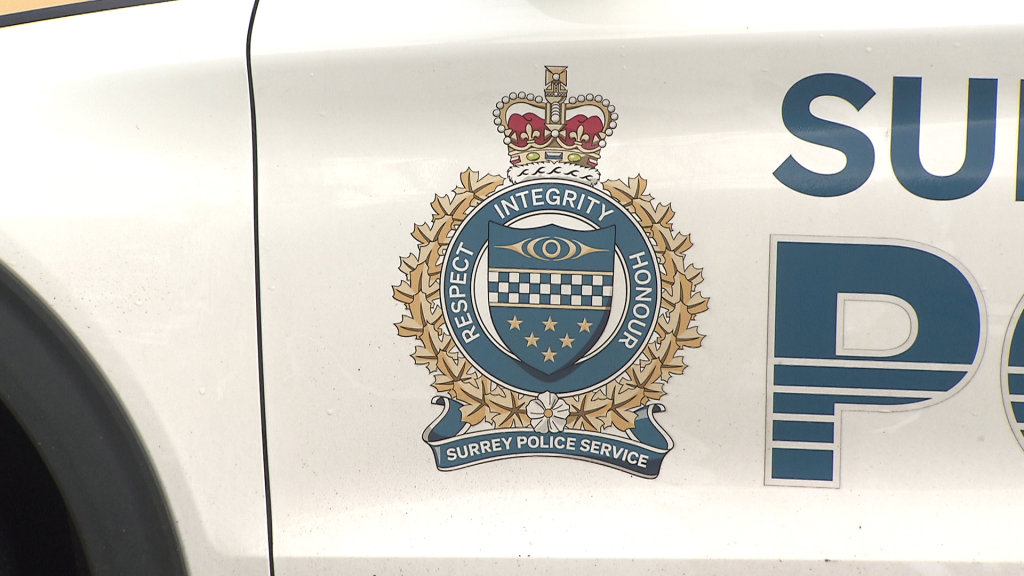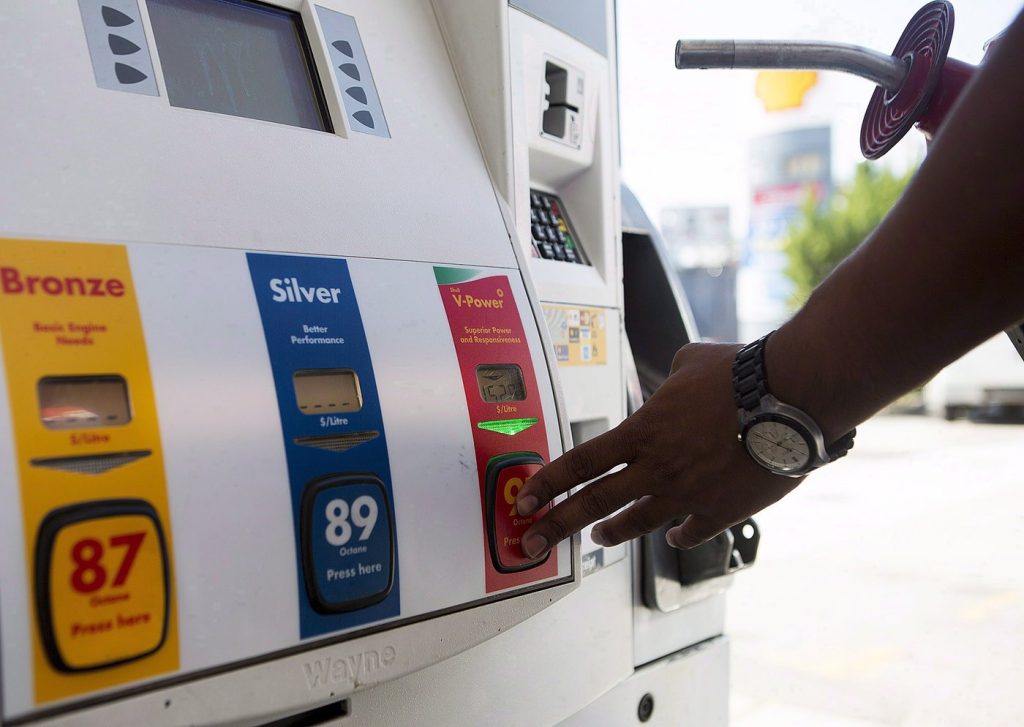Vancouver to install pedestrian scramble at Granville/Robson
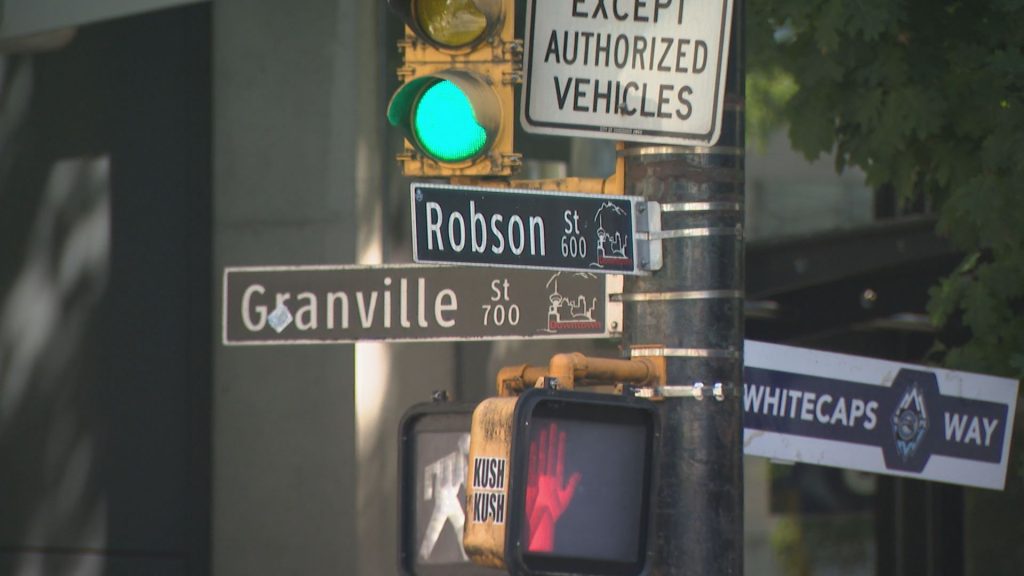
Posted October 17, 2023 1:04 pm.
The City of Vancouver will be installing a multi-directional pedestrian crossing at the intersection of Granville and Robson streets.
On Tuesday, city council voted to implement a “pedestrian scramble” at the downtown intersection. It will see a phase in the traffic sequence during which pedestrians can cross the streets in all directions, including diagonally.
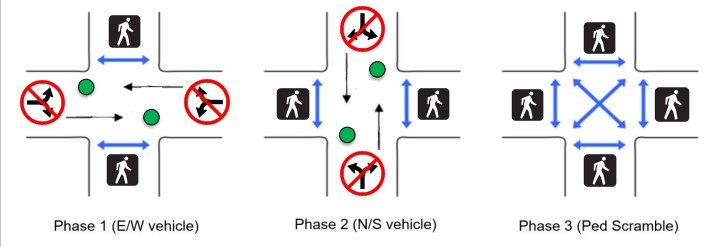
Such intersections are seen in cities around the world, including Tokyo, as well as in Canadian cities like Toronto, Calgary, and Victoria.
In April, coun. Peter Meiszner brought forward a motion directing staff to look at the viability of adding scramble intersections in some areas of Vancouver.
Read more: Vancouver will consider changing the way you cross the street
Winston Chou, Vancouver’s manager of Traffic and Data Management, explained to council that staff looked at four potential intersections at which the scramble could be installed. They included Granville and Georgia streets, Granville and Robson streets, Commercial Drive and 1st Avenue, and Davie and Denman streets.
He said the Granville and Robson intersection was chosen for the pilot program as it sees higher pedestrian volumes compared to vehicle traffic. It was also identified as the cheapest intersection to install a scramble, with an anticipated price tag of about $100,000. Other intersections would have seen costs north of $500,000, staff noted.
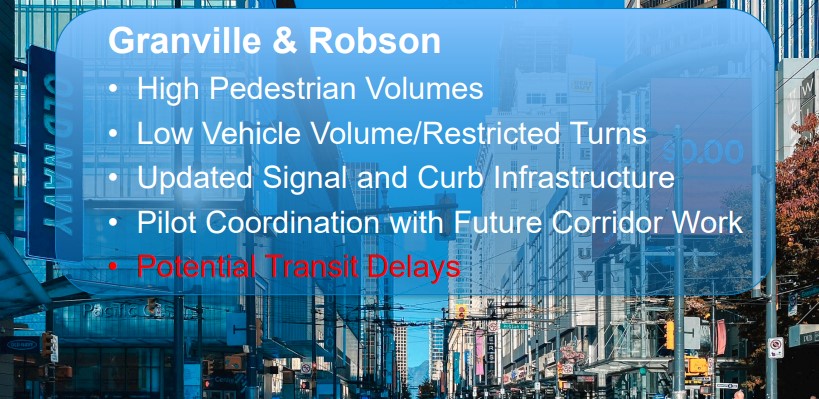
Chou added that the scramble will eliminate conflicts between pedestrians and vehicles and decrease walking distances for those on foot. On the downside, he said the intersections can also result in longer waits for pedestrians, delays for transit vehicles, and accessibility challenges for the visually impaired.
However, Chou noted the impact on transit by the scramble at Granville and Robson will only result in a roughly 37-second delay per vehicle at peak traffic. He added that he has also consulted with the Canadian National Institute for the Blind on how to improve accessibility.
The scramble is expected to be up and running by next summer, and Chou says it will likely remain in place indefinitely.
Councillors unanimously approved the staff report with an amendment they receive an update on the pilot in the first quarter of 2025.
‘It’s a great idea, we just want more of it’: advocate on scramble crossing pilot
An advocacy group that aims to reduce serious collisions between pedestrians and vehicles welcomes the launch of the scramble crossing pilot program but thinks it could have gone further.
“We think it’s a great idea, we just want more of it,” said Jade Buchanan with Vision Zero Vancouver.
“It is a positive step forward for ending serious injuries and fatalities on our streets but it looks like it’s a much more timid step forward than the councillors who brought the original motion in April thought it was going to be.”
Buchanan tells CityNews that he feels the city missed an opportunity to implement the pilot at busier intersections, such as Burrard and Georgia streets, and Broadway and 1st Avenue.
“All are significantly more dangerous intersections where scramble crossing could have gone a lot further,” he said. “It (Granville/Robson) is fairly low-impact in terms of its ability to reduce drivers crashing into pedestrians.”
Buchanan says that the city could be making bigger moves to reduce collisions between vehicles and pedestrians than just a pilot program at a single intersection.
“I think there’s an appetite for pilots and studies, even though the solutions are very well known. Traffic engineers can take a look at any intersection and tell you exactly what needs to be done,” Buchanan said.
“This is a full year for just a pilot and for a single intersection. It’s really not in line with council’s ambitious agenda for the city.”
